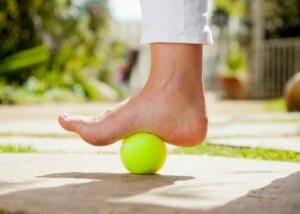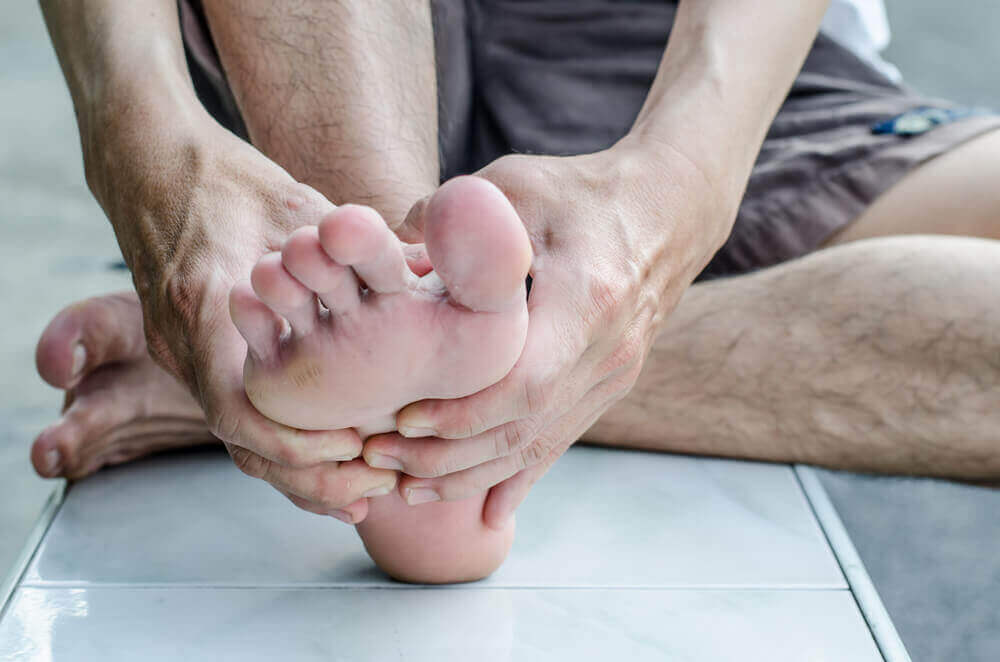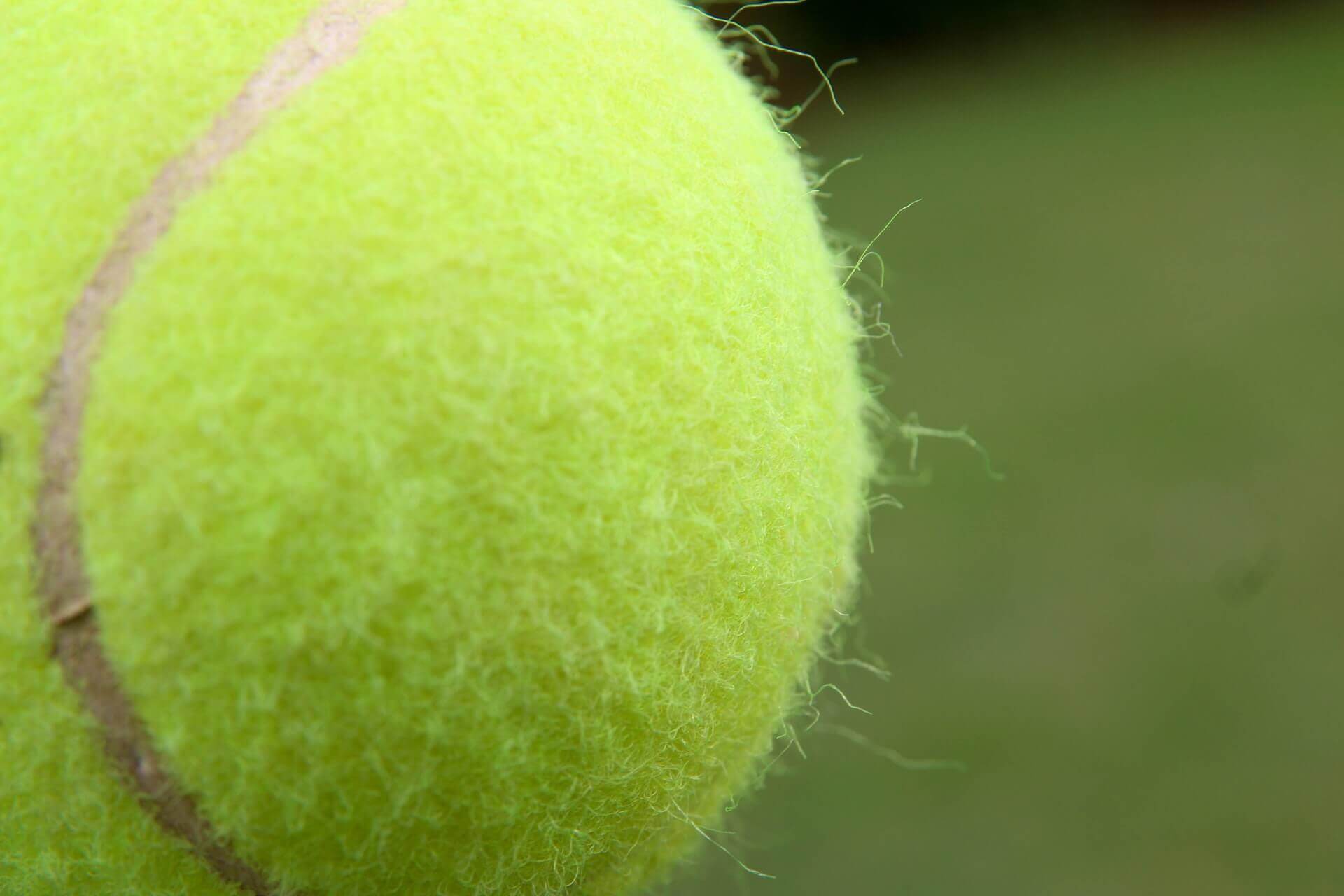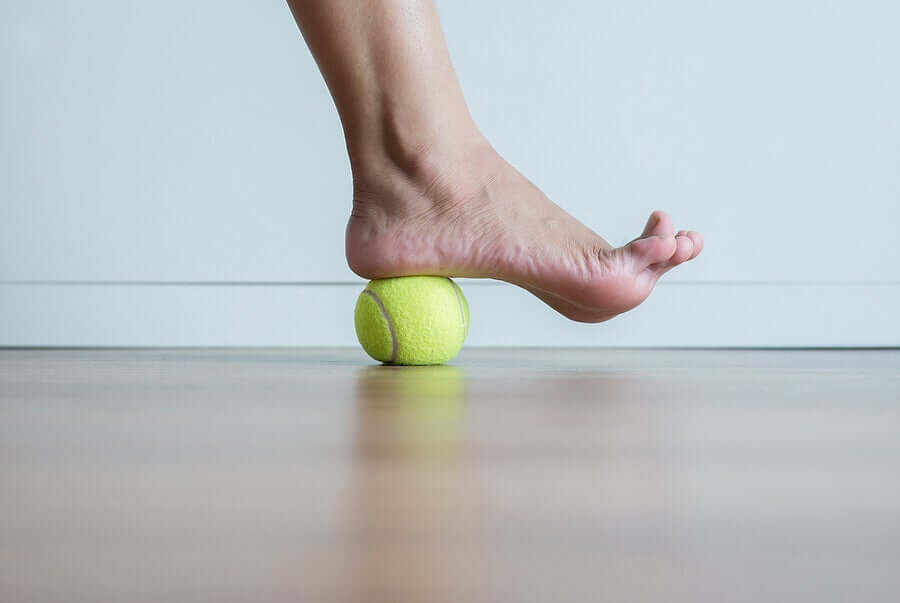How to Use a Tennis Ball to Calm Plantar Fasciitis Pain


Reviewed and approved by Doctor Carlos Fabián Avila
Few conditions are as bothersome in everyday life as pain in the sole of the foot. As we’re usually wearing shoes, it’s an area that’s difficult to reach to massage or stretch it. That’s why soothing plantar fasciitis is a priority for many people.
The plantar fascia is a thick band of tissue that connects the heel bone to the toes and creates the arch in the foot. Its primary function is to tense the base of the foot to soften the impact of every bodily movement. Plantar fasciitis occurs when the fascia becomes inflamed and it causes a lot of pain.
This can occur either due to overuse, overstretching, or wearing shoes that don’t provide enough support. People who are overweight or obese also commonly suffer from this, as the extra force it takes to support them creates micro-traumas in the tissue.
According to an article published by Clinical Research, most cases occur in adults between the ages of 40 and 70, but it can also occur in some younger people with a certain predisposition, including the practice of certain sports that imply repetitive impacts on the soles of the feet.
Symptoms and treatment of plantar fasciitis

Its main symptom is pain in the sole of the foot or heel. However, it sometimes spreads to the ankle and toes. Treatment is based on the consumption of painkillers and anti-inflammatory drugs, physical therapy or, in the most severe cases, surgery, as an article in the MSD Manual states.
How to use a tennis ball for plantar fasciitis
You can supplement the measures we detailed above with some stretching exercises. You can do them with a tennis ball, which helps relax and strengthen the affected muscles.
It’s important to note that, in addition to being an element used by many physiotherapists, some scientific studies also support the effectiveness of this technique to relieve physical discomfort. For example, a 2017 study claims that it can immediately reduce shoulder and neck pain.
However, remember that it’s usually used as a complement to other measures prescribed by a professional. Below, we explain them in detail so that you practice them if you feel any kind of discomfort.

Rolling massage
Rolling your feet out with a tennis ball is one of the best therapies you can use to rehabilitate your foot and to calm the pain. Doing so will massage and stretch the foot by using your own strength to reduce tension in the plantar fascia. How to do it?
- Firstly, sit down on a chair, and while keeping your back straight.
- Then, place the tennis ball under the sole of your foot.
- Gently apply pressure to the ball, pushing your foot to the ground and slowly moving forward and backward. You should move the ball from your toes to your heel.
- Roll your foot on the ball for 30 seconds, then repeat with the other foot.
- You can repeat the activity several times a day, according to your doctor’s recommendations, until your pain lessens.
Check out more chair exercises: 6 Remedies for Swelling in Your Ankles, Feet and Legs
Bending
To strengthen your feet and improve the support they provide for you, it’s a good idea to use exercises that improve muscle and tendon flexibility. The following activity will not only relax your feet from pain, but it will also strengthen the sole of the foot, ankle, and legs.
- Firstly, place the tennis ball against a wall and bend your foot.
- Then, place the ball below the upper part of the foot, keeping your heel on the ground.
- Stretch your upper body toward the wall to increase the stretch.
- Take three slow breaths, rest, and repeat as many times as your physical therapy recommends.
Relaxation stretch
This relaxation stretch combines breathing work and putting pressure on tight areas. It helps reactivate blood circulation and reduce inflammation. In addition, it reactivates blood circulation, as a 2004 study that analyzed the effect of massage on the lower back stated, and reduce inflammation.
The pressure you place on the ball will gently massage the soft areas of the foot, thereby providing relief. Do it this way:
- While barefoot, stand with one foot forward, placed on the ball.
- Step on the ball between the arch of your foot and your toes, but keep your weight distributed on the back foot.
- Hold this posture and breathe in and out, while transferring your weight to the front foot.
- Bend your knee slightly, hold for five seconds, then transfer your weight back to the rear foot.
- Repeat on both feet, until you’ve reached five repetitions on each foot.
We also recommend: Muscle Cramps: Learn to Treat Them at Home
Pressure point
Pressure point exercises focus on relaxing any of the muscles of the back of the foot. This allows you to place the ball just below the area where you feel the concentrated pain to relieve plantar fasciitis.
- Firstly, place the tennis ball under the ball of your foot, where the toes meet the rest of the foot, and firmly press down for 10 seconds.
- Change the position of the ball towards the top or bottom of the foot, then repeat.
- Try to start in the areas that are closer to the base of your toes, then slowly move down towards your heel.

Comprehensive treatment to relieve plantar fasciitis
As you can see, a simple ball can become a very good tool to exercise and strengthen your feet. If you suffer from plantar fasciitis or feel pain or fatigue, don’t hesitate to use it as a complement to the treatment your doctor prescribed.
Also, in case of injury, bunions, or corns, these types of activities can relieve pain when combined with other treatments. In all cases, try to follow each of your specialist’s instructions to solve the problem as soon as possible.
All cited sources were thoroughly reviewed by our team to ensure their quality, reliability, currency, and validity. The bibliography of this article was considered reliable and of academic or scientific accuracy.
- Weerasak Tapanya, Noppharath Sangkarit, Saisunee Konsanit. 2017. The Immediate Effects of Neck and Shoulder Muscle Massage Device Developingfrom Tennis Balls. Srinagarind Medical Journal. https://li01.tci-thaijo.org/index.php/SRIMEDJ/article/view/85006
- Hoebeke, R. E. (2008). Diagnosing Plantar Fascitis. Journal for Nurse Practitioners. https://doi.org/10.1016/j.nurpra.2007.10.005
- Lafuente Guijosa, A., Muñoz, I. O. M., De La Fuente, M. E., & Cura-Ituarte, P. (2007). Fascitis plantar: Revisión del tratamiento basado en la evidencia. Reumatologia Clinica.
- Mori H, Ohsawa H, Tanaka TH, Taniwaki E, Leisman G, Nishijo K. Effect of massage on blood flow and muscle fatigue following isometric lumbar exercise. Med Sci Monit. 2004;10(5):CR173-CR178.
- Córdova, Alfredo, López, Diego, Fernández-Lazaro, Diego, & Caballero, Alberto. (2017). Nueva visión del tratamiento de la fascitis plantar en deportistas: Utilidad del entrenamiento funcional mediante el esquí. Investigación Clínica, 58(3), 309-318. Recuperado en 01 de julio de 2020, de http://ve.scielo.org/scielo.php?script=sci_arttext&pid=S0535-51332017000300008&lng=es&tlng=es.
- Whitney, A. 2018. Fasciosis plantar. Manual MSD. https://www.msdmanuals.com/es-ar/hogar/trastornos-de-los-huesos,-articulaciones-y-m%C3%BAsculos/problemas-del-pie/fasciosis-plantar#v26371414_es
This text is provided for informational purposes only and does not replace consultation with a professional. If in doubt, consult your specialist.








